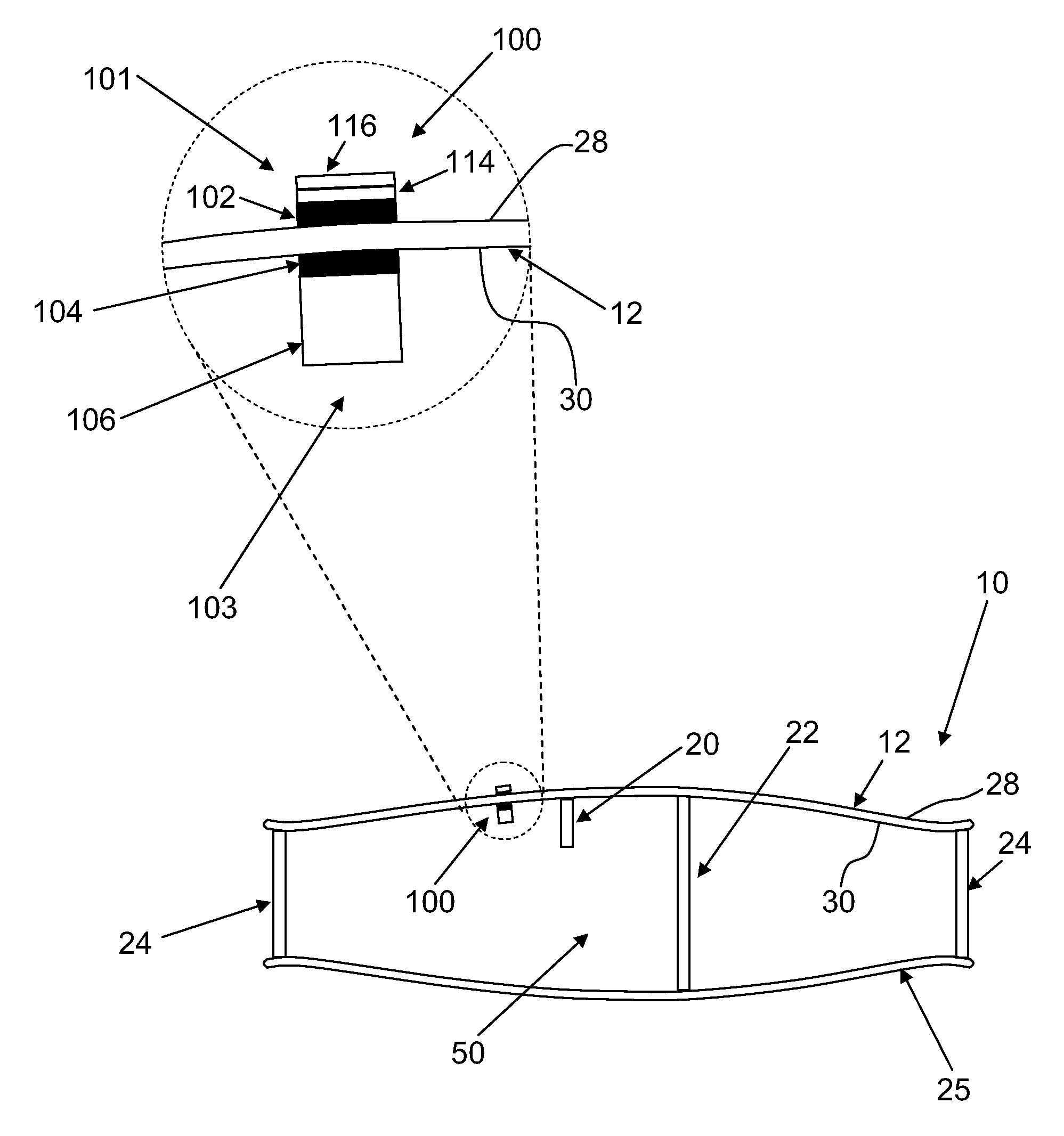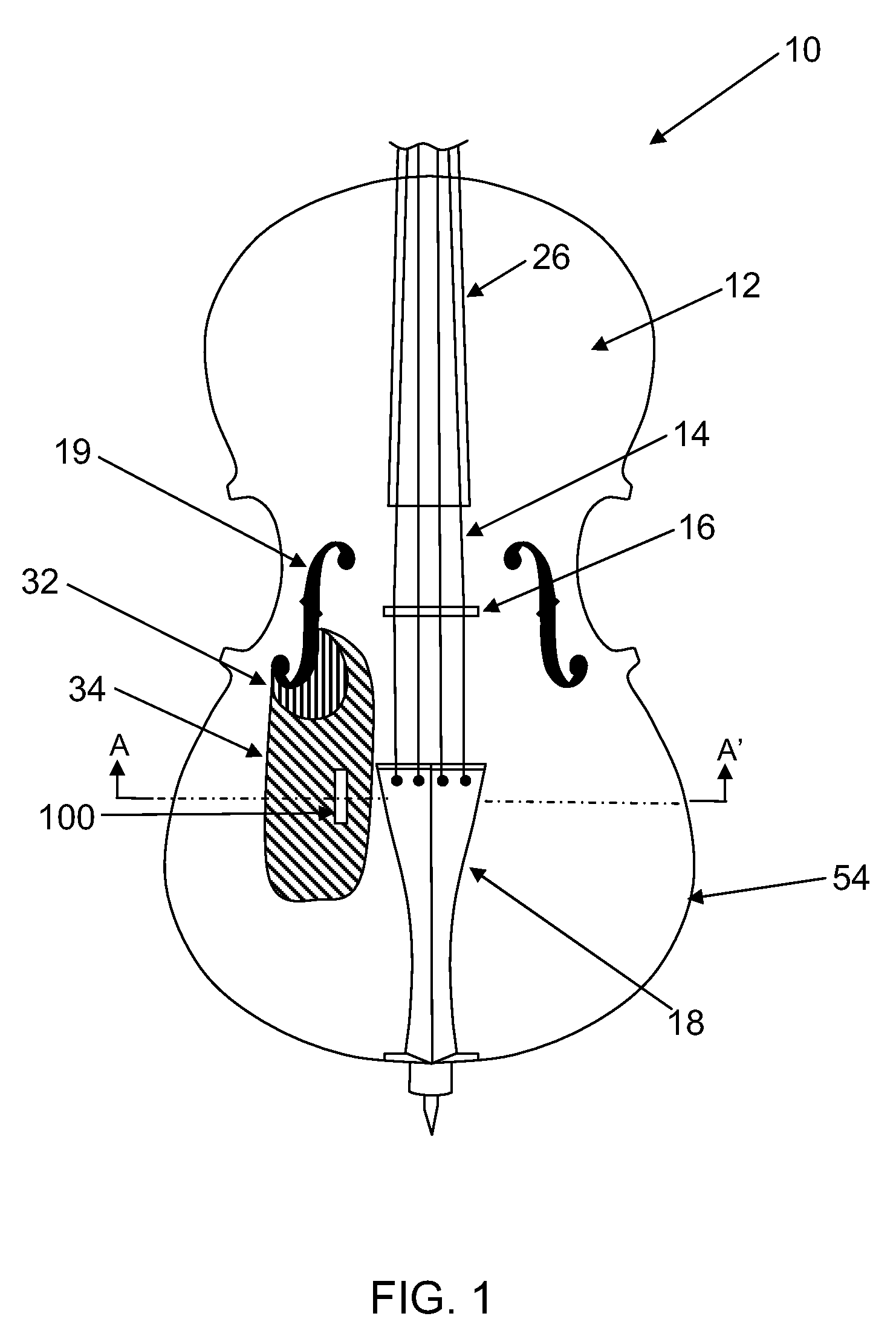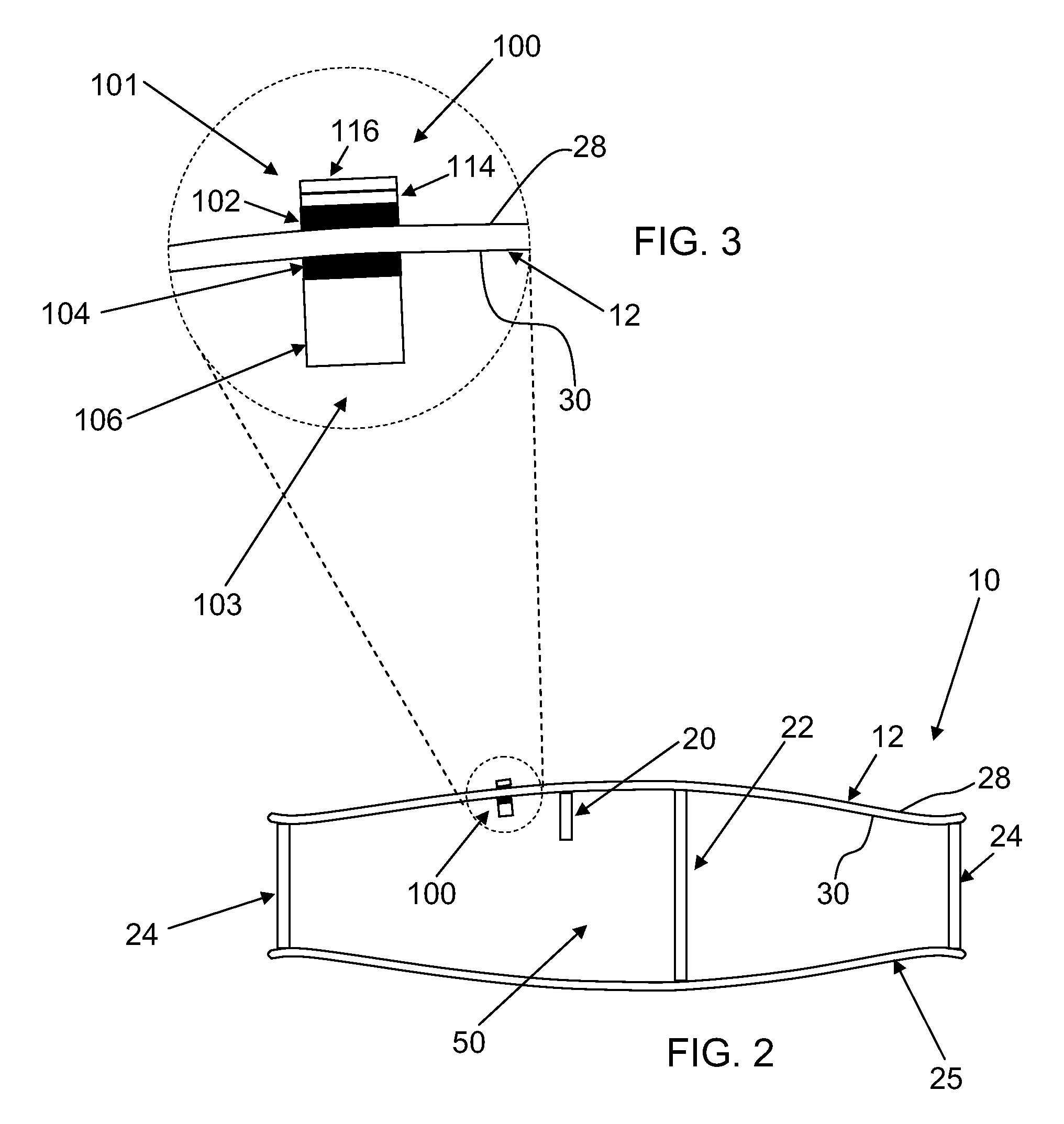Anti-wolf-note resonator assembly for a string instrument and method of assembling the same
a wolf-note resonator and string instrument technology, applied in the field of string instruments, can solve the problems of wolf-note sound generation, uncontrollable amplitude modulation, and unintended note production at a frequency different than that of the intended note, and achieve the effect of facilitating damping at least one no
- Summary
- Abstract
- Description
- Claims
- Application Information
AI Technical Summary
Benefits of technology
Problems solved by technology
Method used
Image
Examples
Embodiment Construction
[0025]FIG. 1 is a front view of a string instrument 10 including an anti-wolf resonator assembly 100 coupled to instrument 10 to facilitate suppressing a wolf-note generated by instrument 10. FIG. 2 is a cross-sectional view of a portion of instrument 10 and assembly 100 and taken along line A-A′. FIG. 3 is an enlarged view of instrument 10 and assembly 100 shown in FIG. 2. In the exemplary embodiment, instrument 10 is a cello. Alternatively, instrument 10 may be a violin, a viola, a bass, or any string instrument that may generate at least a wolf-note or an excessively loud note when played. In the exemplary embodiment, instrument 10 includes a top plate or a surface 12, a plurality of strings 14, a bridge 16 that secures strings 14 a distance away from top plate 12, a tailpiece 18, and at least one f-hole 19 that is defined within top plate 12. In the exemplary embodiment, top plate 12 includes a first surface or a first side 28 and an opposite second surface or a second side 30. ...
PUM
 Login to View More
Login to View More Abstract
Description
Claims
Application Information
 Login to View More
Login to View More - R&D
- Intellectual Property
- Life Sciences
- Materials
- Tech Scout
- Unparalleled Data Quality
- Higher Quality Content
- 60% Fewer Hallucinations
Browse by: Latest US Patents, China's latest patents, Technical Efficacy Thesaurus, Application Domain, Technology Topic, Popular Technical Reports.
© 2025 PatSnap. All rights reserved.Legal|Privacy policy|Modern Slavery Act Transparency Statement|Sitemap|About US| Contact US: help@patsnap.com



